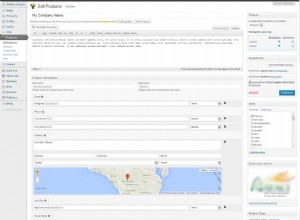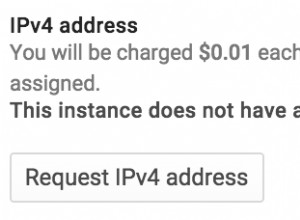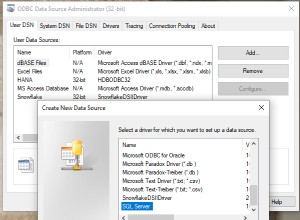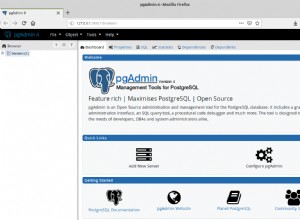Este trabajo es para mí usando SQLServer (sin métodos asincrónicos probados):
Primero, cree un DbCommandInterceptor (lo llamé HintInterceptor.cs)
using System;
using System.Data.Common;
using System.Data.Entity.Infrastructure.Interception;
using System.Text.RegularExpressions;
public class HintInterceptor : DbCommandInterceptor
{
private static readonly Regex _tableAliasRegex = new Regex(@"(?<tableAlias>FROM +(\[.*\]\.)?(\[.*\]) AS (\[.*\])(?! WITH \(*HINT*\)))", RegexOptions.Multiline | RegexOptions.IgnoreCase | RegexOptions.Compiled);
[ThreadStatic]
public static string HintValue;
private static string Replace(string input)
{
if (!String.IsNullOrWhiteSpace(HintValue))
{
if (!_tableAliasRegex.IsMatch(input))
{
throw new InvalidProgramException("Não foi possível identificar uma tabela para ser marcada para atualização(forupdate)!", new Exception(input));
}
input = _tableAliasRegex.Replace(input, "${tableAlias} WITH (*HINT*)");
input = input.Replace("*HINT*", HintValue);
}
HintValue = String.Empty;
return input;
}
public override void ScalarExecuting(DbCommand command, DbCommandInterceptionContext<object> interceptionContext)
{
command.CommandText = Replace(command.CommandText);
}
public override void ReaderExecuting(DbCommand command, DbCommandInterceptionContext<DbDataReader> interceptionContext)
{
command.CommandText = Replace(command.CommandText);
}
}
Así que en Web.config registra tu clase de interceptor
<entityFramework>
<defaultConnectionFactory type="System.Data.Entity.Infrastructure.SqlConnectionFactory, EntityFramework" />
<providers>
<provider invariantName="System.Data.SqlClient" type="System.Data.Entity.SqlServer.SqlProviderServices, EntityFramework.SqlServer" />
</providers>
<interceptors>
<interceptor type="Full.Path.Of.Class.HintInterceptor, Dll.Name" />
</interceptors>
</entityFramework>
Ahora creo una clase estática llamada HintExtension
public static class HintExtension
{
public static IQueryable<T> WithHint<T>(this IQueryable<T> set, string hint) where T : class
{
HintInterceptor.HintValue = hint;
return set;
}
public static IQueryable<T> ForUpdate<T>(this IQueryable<T> set) where T : class
{
return set.WithHint("UPDLOCK");
}
}
Eso es todo, puedo usar dentro de una transacción de base de datos como:
using(var trans = context.Database.BeginTransaction())
{
var query = context.mydbset.Where(a => a.name == "asd").ForUpdate();
// not locked yet
var mylist = query.ToList();
// now are locked for update
// update the props, call saveChanges() and finally call commit ( or rollback)
trans.Commit();
// now are unlocked
}
Perdón por mi inglés, espero que mi ejemplo ayude.




